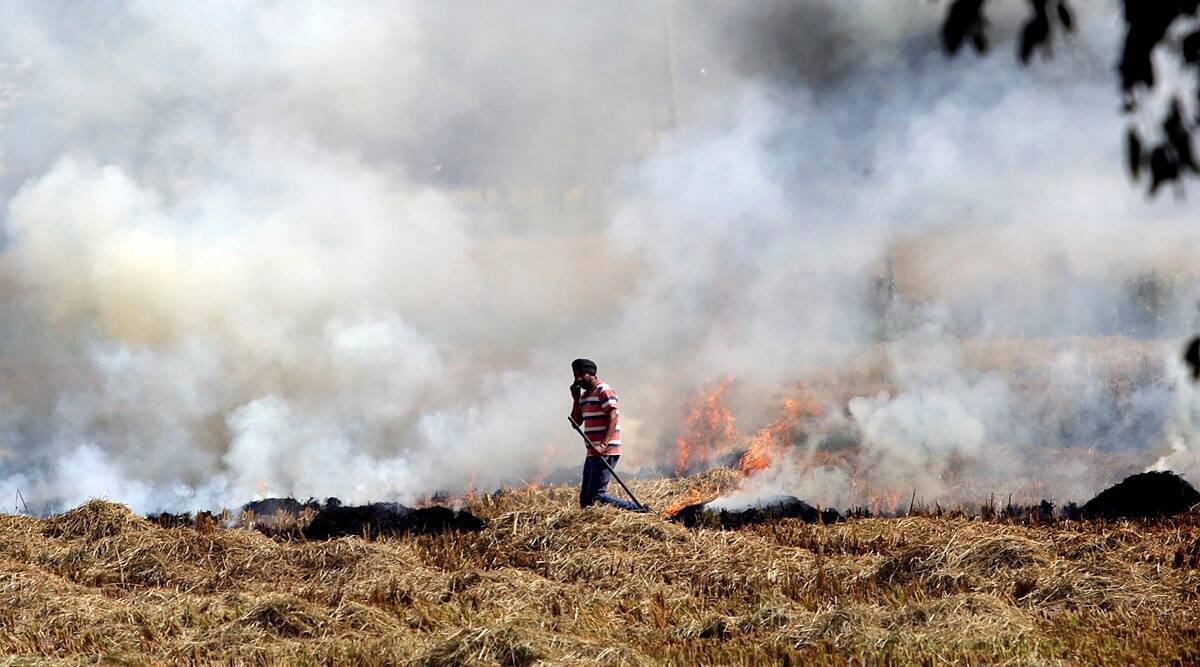
NEW DELHI: Due to low wind speed and increasing incidences of stubble burning in Punjab, the air quality in the Delhi National Capital Region (NCR) continues to show a downward trend. On Sunday, the overall air quality of Delhi was in ‘very poor’ category, while some areas were in the ‘severe category.
This time the contribution of stubble burning in particulate matter 2.5 (PM) pollution has soared up to 26 per cent, which is at its highest this year.
The overall Air Quality Index (AQI) of Delhi stood at 367 at 9 am, which showed a minor improvement by coming down to the mark of 352 at 4 PM. However, the 24-hour average stood at 397, the highest since January. On Thursday, the AQI was at 354, while on Wednesday, it was 302 and 312 on Diwali.
This Sunday, the AQI was at 449 in Anand Vihar, making it the most polluted area in Delhi in terms of air pollution, while in Vivek Vihar it was 402. Gopal Rai, Minister for Environment Forest and Wildlife, Government of NCT of Delhi, said that the possible reason behind the high pollution in both areas could be the ongoing construction work on the Regional Rapid Transit System (RRTS) project.
The Environment Minister added, “We have directed the user agency to strictly follow the dust pollution control norms. The government has deployed 15 anti-smog guns in those areas in addition to seven water sprinklers of the Municipal Corporation of Delhi.”
As far as stubble burning is concerned, the Indian Agricultural Research Institute (IARI) reported 1,761 farm fires in the state of Punjab on Sunday, while on Saturday, it recorded 1,898 such incidents. Before that, on Friday, the institute recorded 2,067 stubble burning incidents, the highest of this season. The organisation recorded the incidents of stubble burning in Haryana (112) and Uttar Pradesh (UP).
Data gathered from the remote sensing satellite shows that till October 24, only 39 per cent of the sown area in Punjab has been harvested, due to which the number of incidents of stubble burning is likely to increase.
In response to the rising air pollution level in Delhi, the central government’s panel on air quality has directed the concerned authorities in the region to bar construction and demolition activities and impose stage-III restrictions under the upgraded Graded Response Action Plan (GRAP). Minister Rai added that the Government of Delhi has set up 586 teams to ensure compliance with construction related restrictions.
GRAP is a severity-based anti-air pollution action plan for the Delhi NCR region. According to the action plan, the air quality in the UT and its vicinity is classified into four different categories: Stage I – ‘Poor’ (AQI 201-300), Stage II – ‘Very Poor’ (AQI 301-400), Stage III – ‘Severe’ (AQI 401-450) and Stage IV – ‘Severe Plus’ (AQI 450 <).
When Stage III restrictions are in place, the local authorities restrict construction and demolition activities in the national capital region. However, essential projects and non-polluting activities, including plumbing, carpentry, interior decoration and electrical works, have been kept out of the purview of these restrictions.
While steps under Stage IV include ban on entry of trucks into Delhi, in public, municipality and other private offices, 50 per cent of the staff is given work from home. Apart from that all the educational institutions are closed and private vehicles could run on an odd-even basis.

